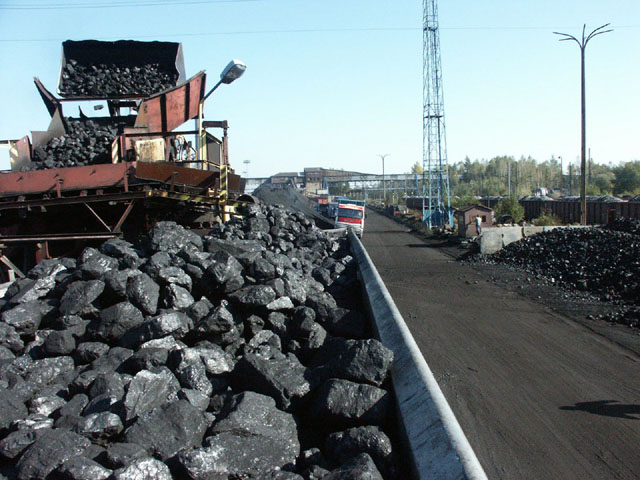 RECOMMENDATION OF WEAR. The norms of coal consumption in steam locomotives are basically established for conventional coal with a calorific value 6200 inch/kg. Wear for shunting (fistula) on construction sites is approx 40%, consumption standards adopted for normal traffic in PKP. Taking the above coefficient into account, we get e.g.. for TK-2 steam locomotives, TK-3, Silesia and Ferrum lower amounts of coal burned. Steam locomotives with a grate area of over 2 m2 burn much more coal, therefore, for economic reasons, they should not be used for light shunt work on construction sites. Steam locomotives Tr-203, about the grate surface 3,8 m2, burn four times more coal, so using them for shunt works is a waste. When determining or correcting the norms and indicators of solid fuel consumption by construction equipment, there is a healthy and correct tendency to relate the norms and indicators not to a unit of time, but to a unit of output characteristic for a given type or type of equipment.. This method allows for more and more precise specification of standards and indicators and for permanent achievement of effective savings in fuel consumption.. The adoption of standards and indicators per unit of output also creates a proper basis for the expansion of the competition movement by replacing the existing statistical or even customary indicators and standards., new ones, Progressive, technically justified fuel consumption standards. Due to the fundamental importance of solid fuels for the national economy, for a large commodity mass, what they represent in trade and on the size of the solid fuel distribution apparatus, demand, distribution and ordering of coal and coke is carried out according to a precisely defined procedure. The related documentation and reporting documentation must be kept in a strictly uniform manner, error-free and timely on special forms. For example, templates of justifications for the demand for solid fuels are given, used in industrial construction. The monthly reporting includes reports on the initial inventory, the volume of supplies and consumption as well as final stocks of solid fuels. When submitting the reports, reports are also submitted on the real achieved savings in solid fuels and overflows.
RECOMMENDATION OF WEAR. The norms of coal consumption in steam locomotives are basically established for conventional coal with a calorific value 6200 inch/kg. Wear for shunting (fistula) on construction sites is approx 40%, consumption standards adopted for normal traffic in PKP. Taking the above coefficient into account, we get e.g.. for TK-2 steam locomotives, TK-3, Silesia and Ferrum lower amounts of coal burned. Steam locomotives with a grate area of over 2 m2 burn much more coal, therefore, for economic reasons, they should not be used for light shunt work on construction sites. Steam locomotives Tr-203, about the grate surface 3,8 m2, burn four times more coal, so using them for shunt works is a waste. When determining or correcting the norms and indicators of solid fuel consumption by construction equipment, there is a healthy and correct tendency to relate the norms and indicators not to a unit of time, but to a unit of output characteristic for a given type or type of equipment.. This method allows for more and more precise specification of standards and indicators and for permanent achievement of effective savings in fuel consumption.. The adoption of standards and indicators per unit of output also creates a proper basis for the expansion of the competition movement by replacing the existing statistical or even customary indicators and standards., new ones, Progressive, technically justified fuel consumption standards. Due to the fundamental importance of solid fuels for the national economy, for a large commodity mass, what they represent in trade and on the size of the solid fuel distribution apparatus, demand, distribution and ordering of coal and coke is carried out according to a precisely defined procedure. The related documentation and reporting documentation must be kept in a strictly uniform manner, error-free and timely on special forms. For example, templates of justifications for the demand for solid fuels are given, used in industrial construction. The monthly reporting includes reports on the initial inventory, the volume of supplies and consumption as well as final stocks of solid fuels. When submitting the reports, reports are also submitted on the real achieved savings in solid fuels and overflows.